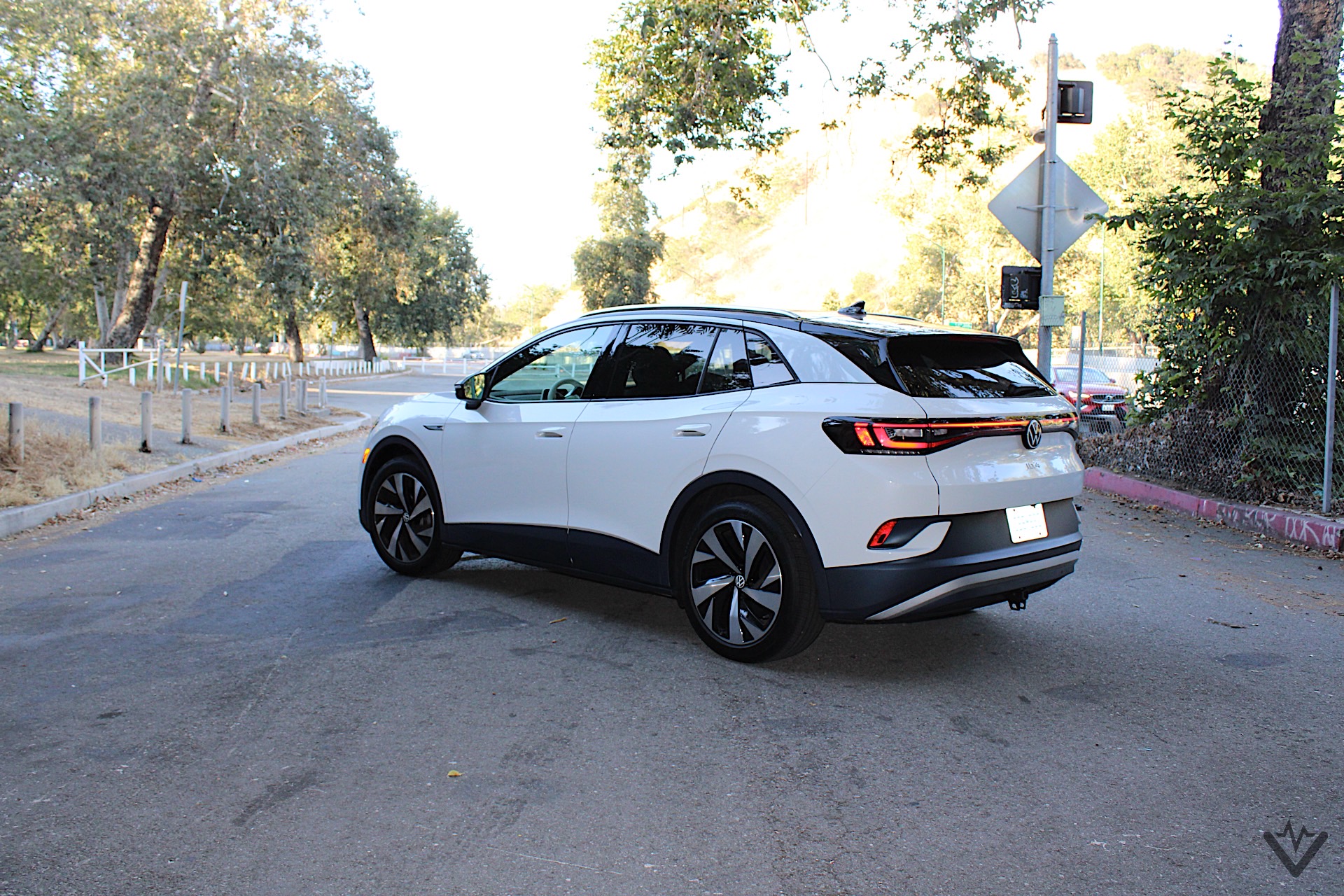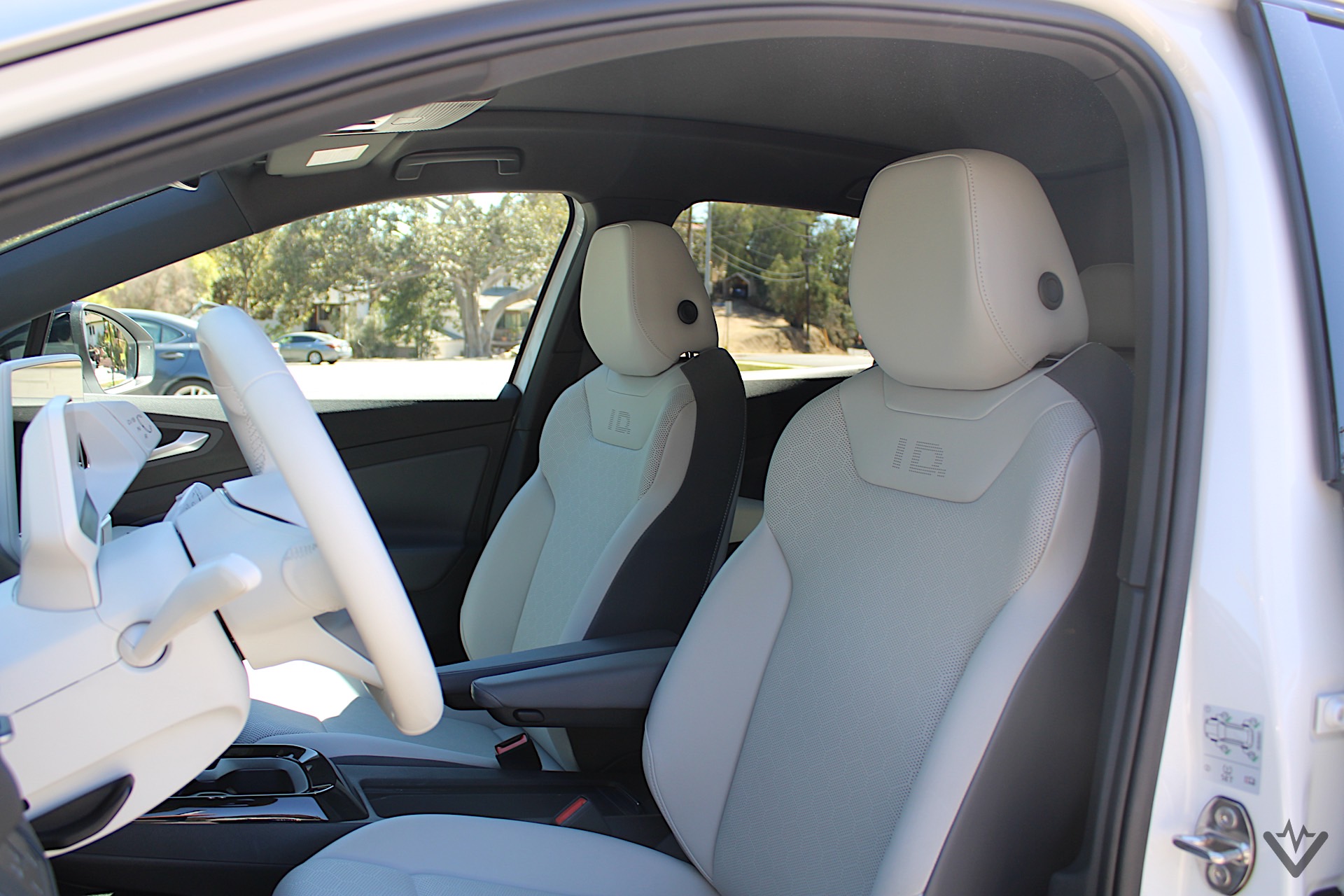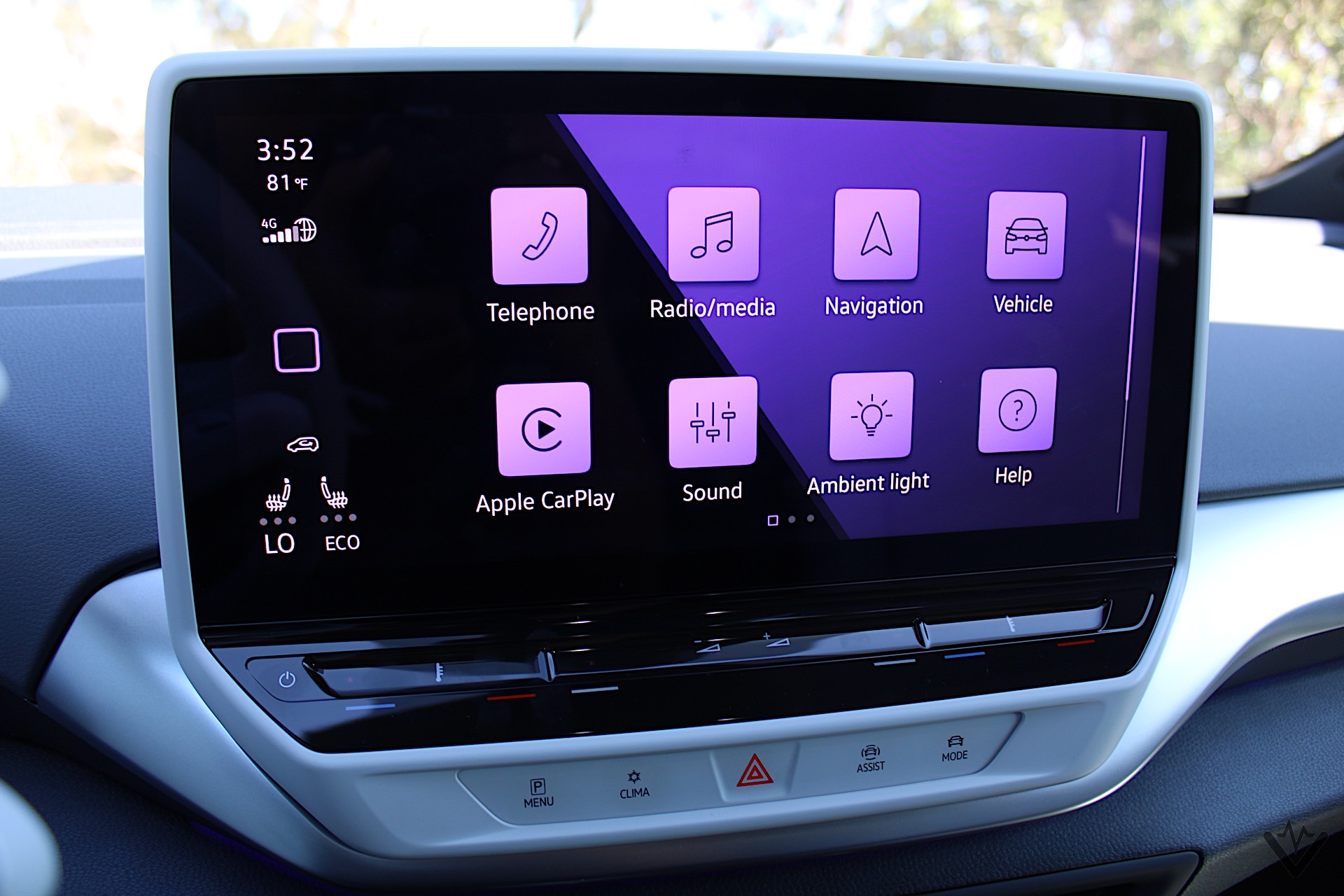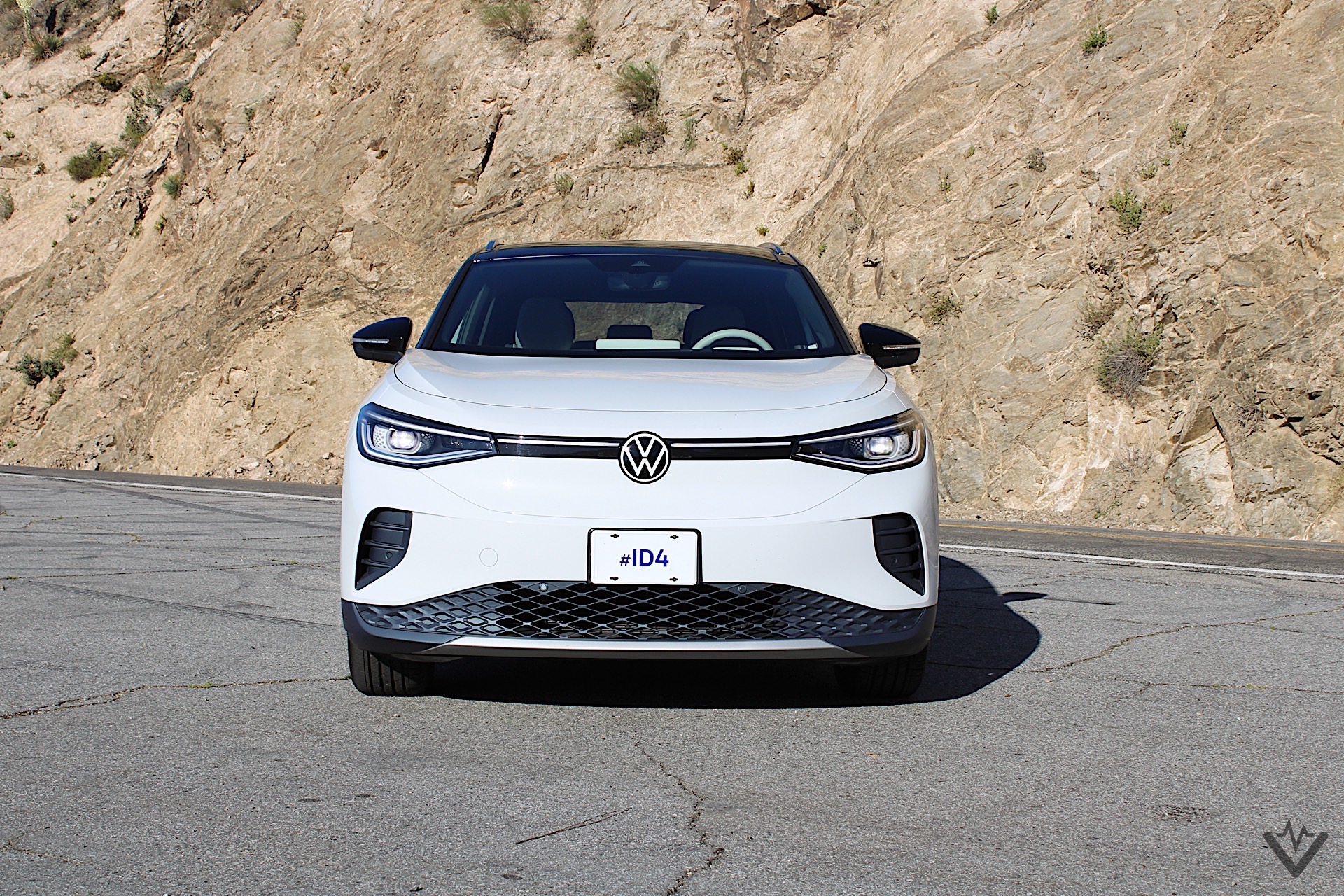Normalizing battery electric vehicles require a lot of work. You need to show consumers that it’s not as intimidating as it seems and transition slowly by keeping things conventional. The 2021 Volkswagen ID.4 aims to do just that, promising good road manners and practicality wrapped in a compact crossover shell for maximum appeal. It also features the latest driver assistance and semi-autonomous technologies to entice the most progressive types. Does this newcomer have what it takes to convince the average person to go electric? Let’s find out!
2021 Volkswagen ID.4 exterior

When you see the 2021 Volkswagen ID.4 for the first time, you’ll immediately notice its rounded profile. The sweptback A-pillar, low roofline, and carlike ground clearance give it a look that’s more akin to a wagon than a rugged crossover. Volkswagen has adopted the grille-free look for its EVs, giving the ID.4 a distinctive yet tastefully restrained front fascia. The rear gets full-width LED taillights and a more upright rear window versus most EVs. The Gradient package adds a contrasting floating roof treatment that’s further highlighted by the silver trim on the D-pillar.
2021 Volkswagen ID.4 interior

The 2021 Volkswagen ID.4’s interior adheres to a minimalist design theme. There are virtually no buttons on the dash, all you get is a free-standing 10.0- or 12.0-inch touch screen complemented by a 5.3-inch gauge cluster. Reconfigurable ambient lighting gives the cabin more character and adds a sense of occasion every time you get in.
Volkswagen did a great job creating useful storage solutions in the center console, which has dividers and a wireless charging pad. The cupholders are removable, adding another place to put things like keys, wallets, and small mobile devices. A flat floor gives rear passengers more foot room. Despite the low roofline and glass roof, the ID.4’s cabin offers generous seating for four adults even on longer drives. Five will be fine on shorter trips or quick lunch runs. Dropping the 60/40 split-folding rear seats allows the ID.4 to handily accommodate bulky objects.
Good material choice results in great build quality. Nearly every surface is padded or made of soft-touch plastic, giving the ID.4 an upscale vibe. Generous sound insulation keeps noise levels down. You hear some wind noise over the B-pillars at highway speeds but not much else. Surprisingly, the available 20-inch alloy wheels don’t cause much tire slapping or roar.
2021 Volkswagen ID.4 tech features

Volkswagen’s latest user interface looks slick thanks to its crisp graphics but isn’t as user-friendly as it seems. Nearly every control is a haptic feedback button, meaning there are no apparent indentations to distinguish one from the other. This requires you to look away from the road when using it, making it distracting. Nearly every function is within a sub menu, too. Want to change the climate controls? You need to go into the climate menu to change the fan speed and airflow because the sliders below the screen are only for the temperature. Other odd controls include the defrosters being lumped together with lights and the use of only two window switches on the driver’s side. If the driver wants to operate the rear window, he/she must hit “REAR” first before pressing or pulling the switches.
Thankfully, the layers of submenus appear limited to three at most and there’s a home button on the side in case you get lost. The Home menu structure is logical and the icons are large and easy to hit. Snappy touch screen responses negate some of the interface’s lack of intuitiveness. The seven-speaker audio system is fairly crisp for a standard unit but could do a better job covering the whole cabin. We wish the trip computer was on the smaller gauge cluster instead of buried under the vehicle settings.
Volkswagen’s IQ. Drive active safety suite works well. Lane-keeping assist does a great job reading road markings and keeping you from drifting around. When it corrects your trajectory, it does so with gentle steering inputs and vibrates the steering wheel to let you know what it’s doing. Travel Assist, which combines adaptive cruise control, lane centering, traffic jam assist, and steering assist works as intended during most driving situations, seamlessly accelerating and braking depending on how traffic flows around you. The distancing component reacts quickly when the vehicle ahead drives away and leaves just enough room to execute emergency maneuvers. It’ll also respond to a vehicle cutting you off by creating more space. However, decelerating from highway speeds when traffic ahead slows down could be more assertive.
2021 Volkswagen ID.4 driving impressions

At 4,665 pounds, the 2021 Volkswagen ID.4 isn’t light and you notice that weight on the road. With 201 hp and 229 lb-ft of torque on tap from its electric motor, acceleration isn’t brisk and won’t give you that rush associated with an EV’s instant power delivery. You won’t struggle going up a hill but you’re not getting any satisfaction mashing the accelerator either. Wait for the dual-motor version if you want an ID.4 with lots of get up and go.
Placing the 82-kWh battery under the passenger cabin lowers the ID.4’s center of gravity. Although that doesn’t make the crossover sporty, this still results in composed handling, allowing it to takes turns confidently and doesn’t lose stability over mid-corner bumps. Good body control keeps the ID.4 from getting floaty or wobbly when going over ruts, expansion joints, and potholes. Even with the optional 20-inch wheels in our test car, you don’t sacrifice ride comfort. Accurate steering allows you to easily place the ID.4 on the road or maneuver it in tight spaces.
Transitions between regenerative and mechanical braking are mostly seamless but there’s room for improvement. During sudden or hard stops, you can tell when the handoffs happen and it gives you a sensation of getting jolted forward because the friction brakes grab too quickly. Stronger energy recuperation in B mode could make one-pedal driving easier because it currently requires you to modulate the brake and accelerator pedals too much while slowing down.
Charging the 2021 Volkswagen ID.4 from 5 to 80 percent takes 38 minutes using a level 3 DC charger. The car’s peak charging speed is 125 kW. Using a level 2 AC charger will get you a full charge in roughly 7.5 hours thanks to the onboard 11 kW charger.
2021 Volkswagen ID.4 pricing
The base 2021 Volkswagen ID.4 starts at $41.190. Our test car, a First Edition example, costs $45,190. The ID.4 is eligible for the full $7,500 tax credit plus state incentives. A more powerful AWD version follows later this year starting at $44,870.
2021 Volkswagen ID.4 final verdict
Normal remains the term to best describe the 2021 Volkswagen ID.4. It drives as you’d expect out of a family-oriented compact crossover, there’s a lot of room, and it rides well without feeling like it’s too softly sprung. In other words, you’re getting a vehicle that’s easy to live with. So yes, the ID.4 will convince the average person to go electric because Volkswagen got the fundamentals right. A little more polishing and a simplified user experience could strengthen its appeal, further adding to the sense of familiarity throughout the whole vehicle. If Volkswagen can address the controls of its new infotainment system and find a way to reduce the learning curve, that alone could make the ID.4 a more attractive proposition.
At a glance
- Year: 2021
- Make: Volkswagen
- Model: ID.4
- Trim: 1st Edition
- Type: four-door compact crossover
- Horsepower: 201 hp
- Torque: 229 lb-ft
- EV range: 250 miles
- Combined MPGe: 97
- Pros: Roomy and quiet interior, smooth ride, clever storage solutions
- Cons: Finicky user interface, leisurely acceleration, braking could be more seamless
- Base price: $41,190
- Price as tested: $45,190
